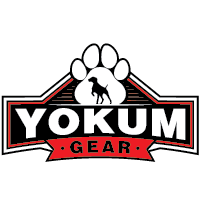When it comes to providing a safe and comfortable space for your dog, selecting the right crate is essential. Medium-sized dog crates are ideal for breeds that fall between the smaller and larger categories, offering sufficient space without overwhelming the dog. This article provides comprehensive guidelines to help you choose the perfect medium-sized crate for your canine companion.
Understanding Your Dog’s Needs
Before purchasing a medium-sized crate, it is crucial to understand the specific needs and behaviors of your dog. Consider the following factors:
- Size: Measure your dog’s height from the ground to the top of their head and their length from the tip of the nose to the base of the tail. The crate should be large enough to allow your dog to stand, turn around, and lie down comfortably.
- Behavior: Assess whether your dog is a chewer, digger, or anxious when confined. These behaviors will determine the type and durability of the crate material you should select.
- Purpose: Identify the primary use of the crate. Whether it’s for travel, potty training, or giving your dog a personal space, the intended purpose will influence the crate design and features you need.
Types of Medium-Sized Dog Crates
There are various types of dog crates available, each with its own set of pros and cons. Here are some popular options:
Wire Crates
Wire crates are highly versatile and provide excellent ventilation and visibility. They are often foldable, making them easy to store and transport. Many come with divider panels to adjust the crate's size as your puppy grows. However, wire crates may not be the best choice for dogs that are prone to escaping or are anxious, as they can feel exposed.
Plastic Crates
Plastic crates, or “airline crates,” are typically more enclosed, providing a cozier and more den-like environment. They are durable and ideal for travel, especially if you fly with your dog. The limited visibility can help anxious dogs feel more secure. On the downside, plastic crates can be bulkier and harder to store when not in use.
Soft-Sided Crates
Soft-sided crates are lightweight and portable, making them perfect for travel and indoor use. They are best suited for dogs that are already crate-trained and are not prone to chewing or excessive activity within the crate. Soft-sided crates are not as durable as wire or plastic options, and they can be easily torn by a determined dog.
Furniture-Style Crates
Furniture-style crates, also known as designer crates, are designed to blend with home decor. They are usually made of wood or a combination of materials and can double as end tables or other furniture pieces. While aesthetically pleasing, these crates are generally more expensive and may not be as easy to clean or as durable as other crate types.
Key Features to Look For
When choosing a medium-sized dog crate, consider the following key features to ensure it meets your and your dog’s needs:
- Size and Space: Ensure the crate is correctly sized for your dog, with enough room for them to move comfortably.
- Durability: Depending on your dog’s behavior, choose a crate made from materials that can withstand their activity levels.
- Portability and Storage: Look for crates that are easy to fold, carry, and store if you plan to move them frequently.
- Ease of Cleaning: Removable trays or floors can make cleaning much more straightforward, especially for house training puppies.
- Safety: Ensure the crate has no sharp edges or small parts that could injure your dog. Secure latching mechanisms are also essential to prevent escapes.
Conclusion
Choosing the perfect medium-sized dog crate involves careful consideration of your dog’s size, behavior, and specific needs, alongside the crate’s material, design, and features. By taking the time to assess these factors, you can select a crate that provides your dog with a secure, comfortable space that enhances their well-being. Remember, the right crate can become a cozy retreat for your furry friend, promoting a sense of security and happiness.

